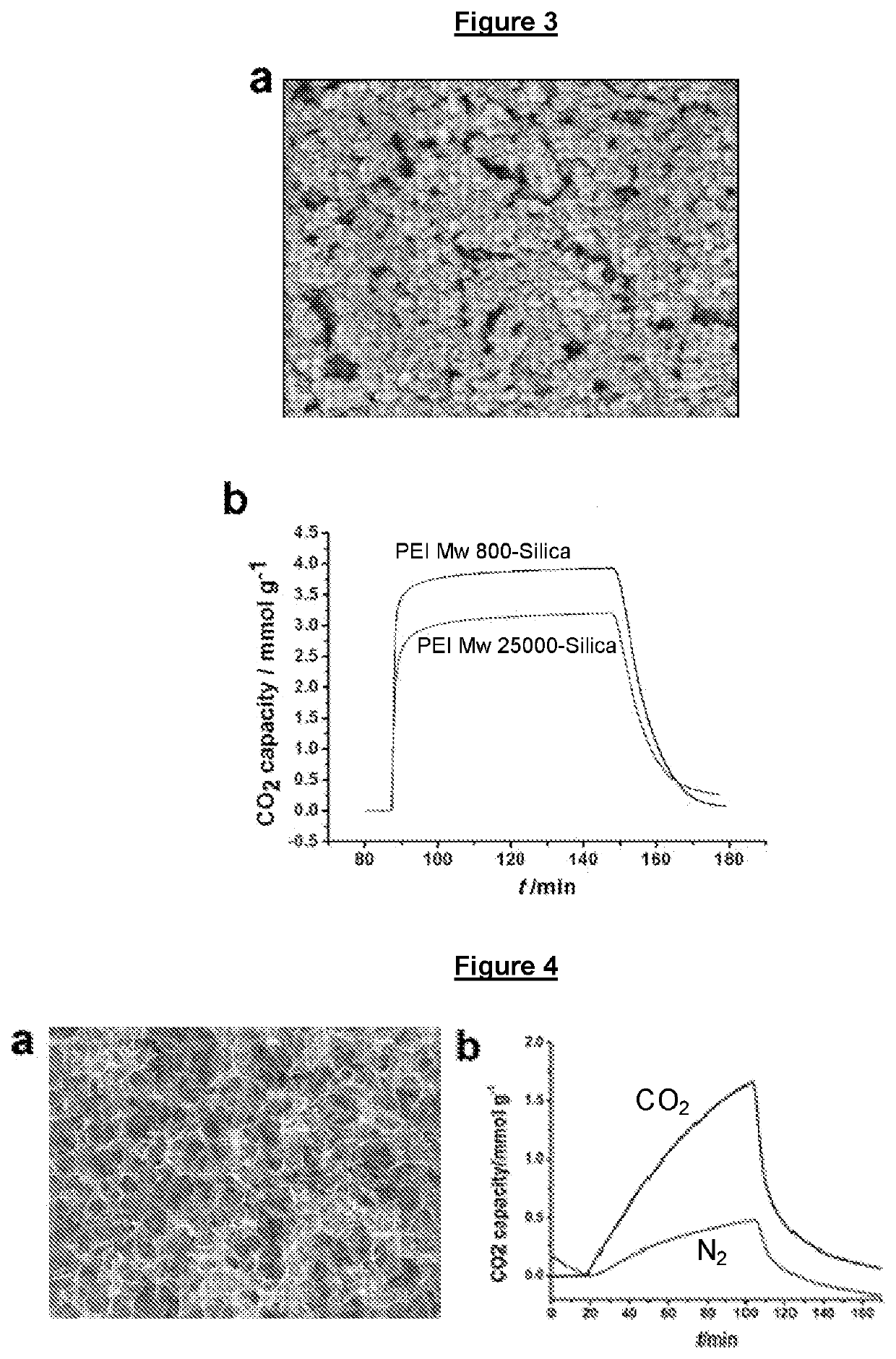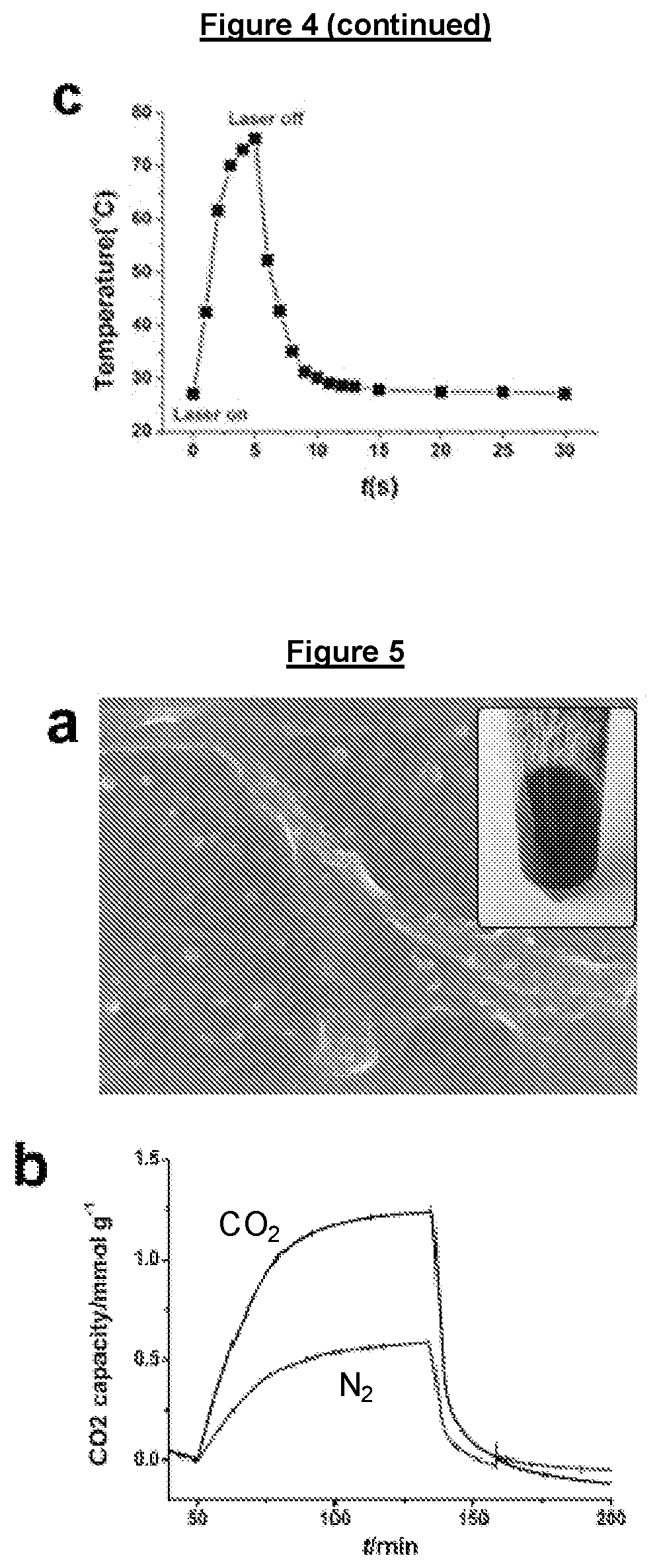A carbon capture membrane
- Summary
- Abstract
- Description
- Claims
- Application Information
AI Technical Summary
Benefits of technology
Problems solved by technology
Method used
Image
Examples
example
Example 1
Preparation of PEI@silica
[0102]5 g of polyethylenimine (PEI) having a molecular weight of 800 Da was dissolved in 50 mL of methanol. This solution was then added stepwise under stirring to 5 g of fumed silica suspension in 50 mL methanol. The mixture was stirred for more than 2 hours to ensure a good dispersion of the polyethylenimine on the silica support.
example 2
Preparation of PEI@silica Modified Commercial Filtration Membranes
[0103]PEI(800)@silica was modified on a commercial filtration membrane (PVDF) and a polyethersulfone (PES) ultrafiltration flat sheet membrane through a filtration method (Wan S et al, 2016, Adv. Mater., 28:7862-7898). A layer of PEI@silica was successfully modified on the PVDF and PES membranes and simultaneously, pores of the filtration membranes were covered. However, since the porous networks of the PVDF and PES membranes are random and tortuous, an undesirable high pressure drop across the membrane was experienced.
example 3
Preparation of PEI©GO Complexes
[0104]The PEI©GO as shown in FIG. 4 is prepared by the following method. GO was prepared by a modified Hummers method (J. Mater. Chem. A, 2015, 3:1142-1151) Aqueous GO dispersion was sonicated in ice-water bath for 6 hours prior to use. The pH value of GO (10 mg / mL) was adjusted to 8.0 gradually with 1 M NaOH aqueous solution. Then GO dispersion (10 mg / mL) was mixed with PEI (6.25 mg / mL) aqueous solution under intense stirring to produce a PEI-GO complex with the concentration of PEI and GO being 5 mg / ml and 2 mg / mL, respectively. The resultant complex solution was thermally annealed in a 90° C. oil bath for 3 hours with vigorous stirring to produce PEI-GO complex solution.
PUM
| Property | Measurement | Unit |
|---|---|---|
| Thickness | aaaaa | aaaaa |
| Thickness | aaaaa | aaaaa |
| Diameter | aaaaa | aaaaa |
Abstract
Description
Claims
Application Information
 Login to View More
Login to View More - R&D
- Intellectual Property
- Life Sciences
- Materials
- Tech Scout
- Unparalleled Data Quality
- Higher Quality Content
- 60% Fewer Hallucinations
Browse by: Latest US Patents, China's latest patents, Technical Efficacy Thesaurus, Application Domain, Technology Topic, Popular Technical Reports.
© 2025 PatSnap. All rights reserved.Legal|Privacy policy|Modern Slavery Act Transparency Statement|Sitemap|About US| Contact US: help@patsnap.com



